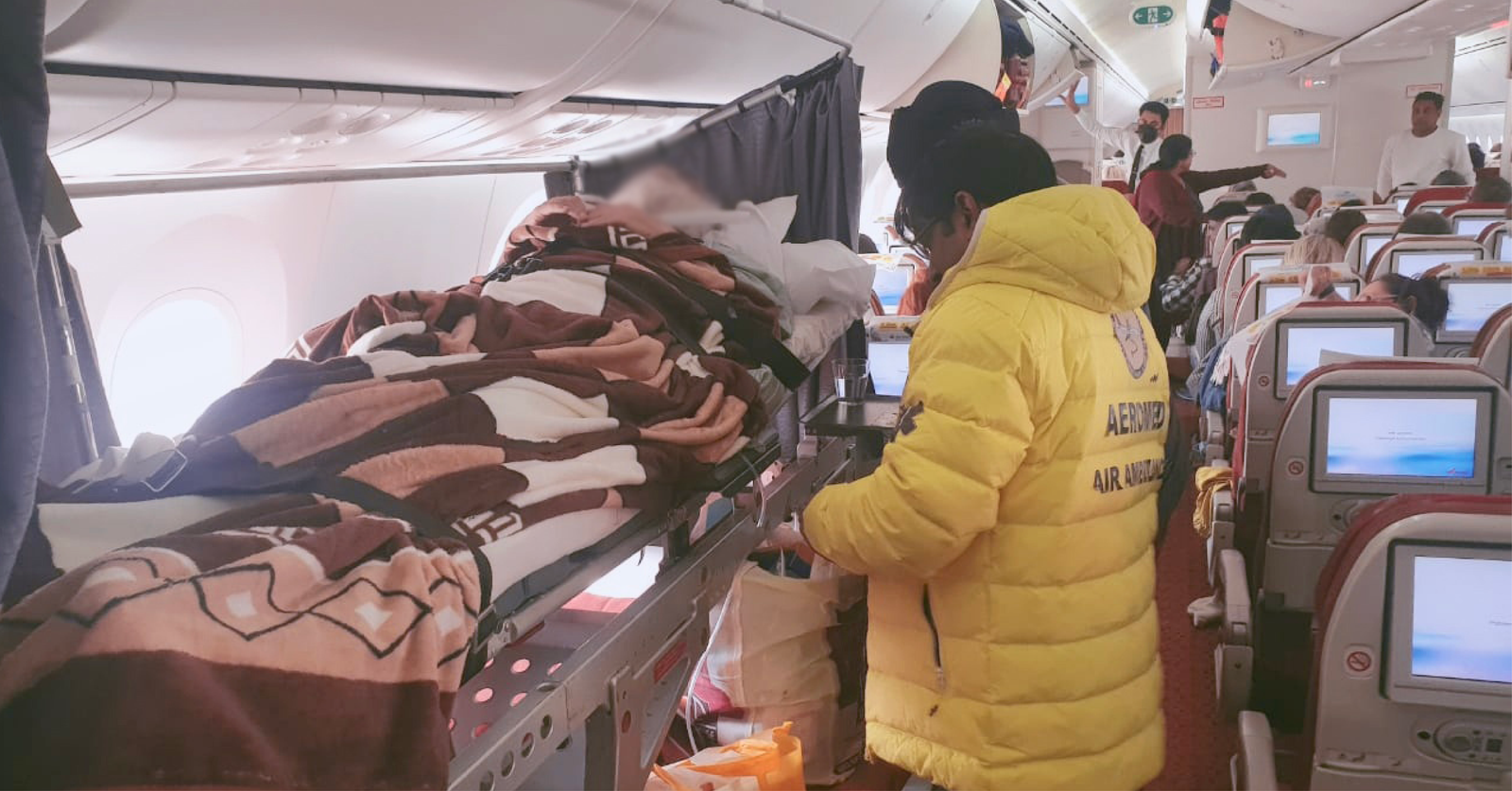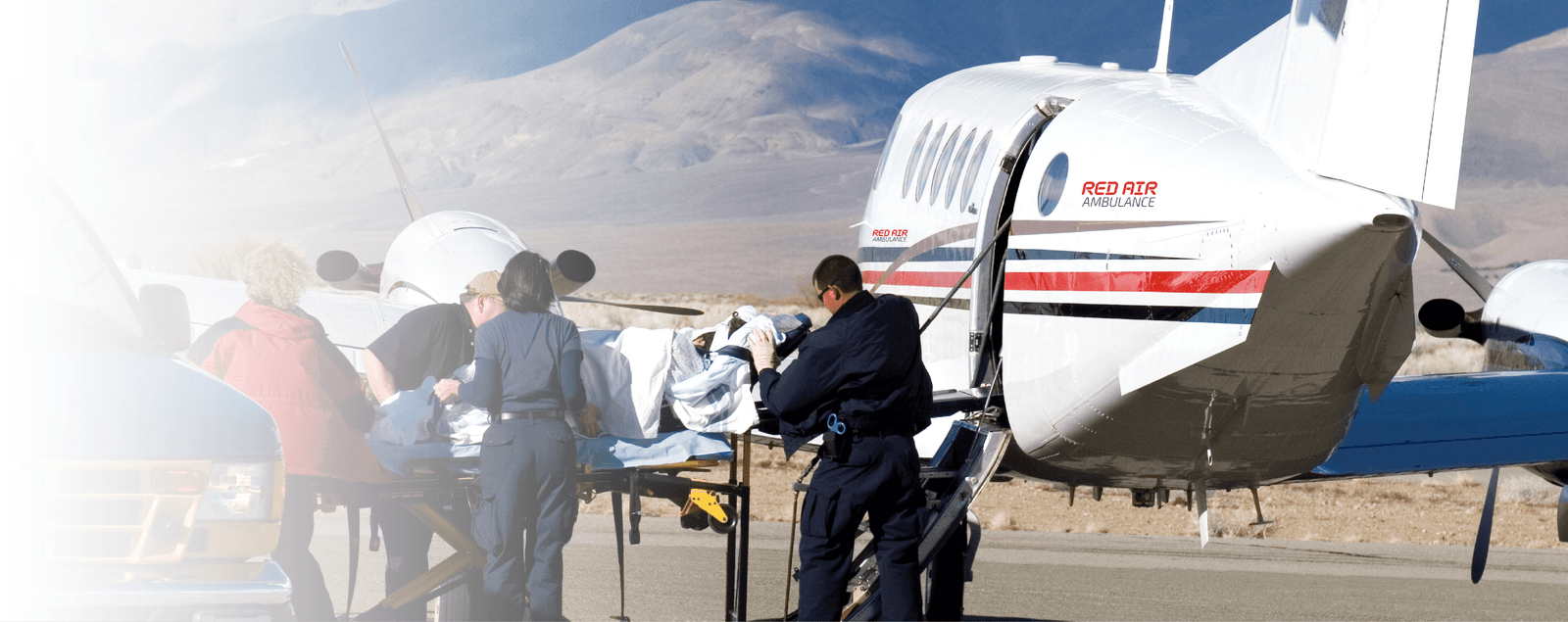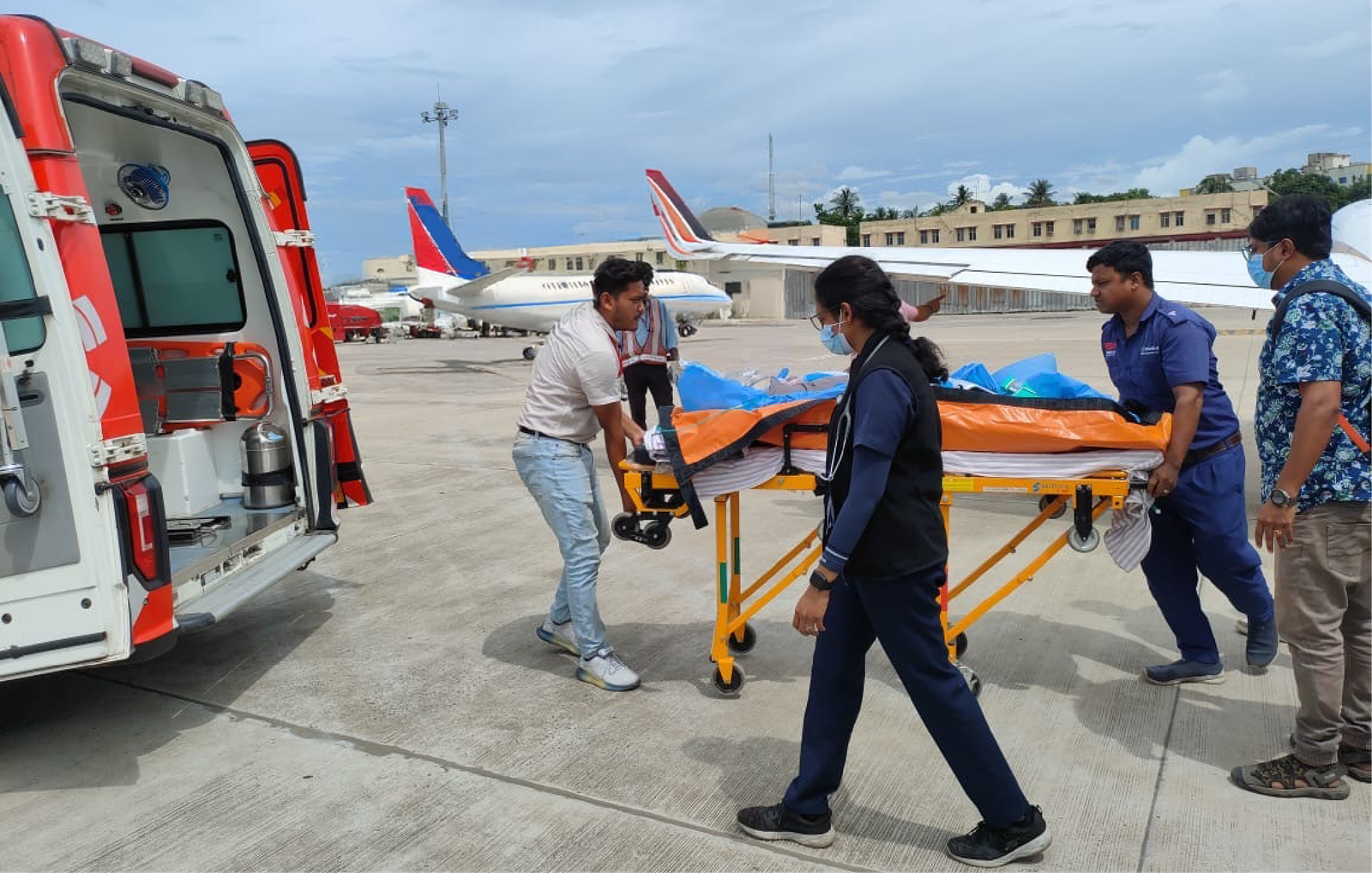The COVID-19 pandemic taught us all a hard lesson—being medically prepared isn’t optional, it’s essential. For air ambulance services in India, this realisation has sparked an important shift. While air ambulances are typically used for pre-planned medical travel, the public health crises of the past few years have led to major improvements in how these services plan, respond and adapt.
Did you know? During the height of the COVID-19 pandemic, air ambulance teams across India flew countless missions to safely transfer critically ill patients between cities—and even across borders—without compromising medical standards or safety. It wasn’t just about getting from Point A to Point B. It was about coordination, infection control, trained staff, and seamless medical communication.
Let’s take a closer look at how air ambulance providers like RED are gearing up to face future pandemics and other large-scale health emergencies.
1. Upgraded Infection Control Measures Onboard
One of the biggest lessons from COVID-19 was how easily infections can spread—even in a controlled medical setting. That’s why pandemic air medical services today are investing in:
- Negative Pressure Isolation Chambers: These are specially designed enclosed units used to isolate infectious patients during the flight. They ensure that any potentially contaminated air stays contained within the chamber, reducing the risk of exposure to the medical crew and aircraft environment.
- Full-body PPE Kits: Every team member involved in the patient transfer is equipped with medical-grade personal protective equipment—from gowns, gloves, and N95 masks to face shields and protective eyewear. Staff are trained rigorously in how to wear (don) and remove (doff) PPE safely to avoid any accidental contamination.
- Deep Disinfection Protocols: After each transfer, the aircraft goes through an intensive cleaning and sanitisation process. All high-contact surfaces, equipment, and the isolation chamber itself are disinfected using hospital-grade solutions. This not only protects the next patient but also safeguards the staff and pilot crew.
- HEPA Filters and Controlled Airflow Systems: High-efficiency particulate Air (HEPA) filters are installed in air ambulances to purify the air and trap harmful particles, including viruses. The airflow is also controlled in a way that reduces the chance of airborne transmission between cabin sections.
These changes aren’t temporary. They’ve now become part of standard protocol during any medical transfer that poses a risk of contagious infection.
2. Specialised Medical Teams for Infectious Disease Management
Not all healthcare workers are trained to manage contagious diseases while airborne. That’s why our team includes medical professionals specially trained in infectious disease control. These team members:
- Understand how to manage respiratory distress in flight
- Use advanced life-support equipment during the transfer
- Follow strict donning and doffing routines for PPE
- Maintain detailed documentation for handovers at the receiving hospital
For emergency air ambulance service, training now goes beyond trauma care—it’s about preparedness, adaptability, and precision.
3. Stronger Coordination with Hospitals and Airports
During a pandemic, time isn’t the only factor—protocol is equally crucial. Our team works closely with:
- Departure and arrival hospitals to ensure smooth coordination
- Airport authorities for safe and swift clearances
- Ground ambulance teams who handle pickup and drop-off from airports, both in remote and urban areas
There’s no door-step airlift. Instead, a well-organised handover process begins with a ground ambulance pickup, often from a hospital or home, which then connects to the air ambulance at the nearest suitable airport.
4. Advanced Equipment Onboard
Today’s air ambulance services in India carry far more than stretchers and oxygen tanks. From ventilators and ECMO machines to infusion pumps and isolation pods, the onboard equipment is designed to support even high-risk patients who need critical care during flight.
The goal is to offer ICU-level care at 30,000 feet—a key requirement during a pandemic or post-pandemic situation when hospitals are overwhelmed, or distances are too long for road travel.
5. International Readiness for Patient Transfers
Borders don’t stop viruses, and in the case of public health emergencies, patients often need treatment abroad. That’s where international patient transfer services come into play. Our services are designed to:
- Coordinate with consulates and embassy medical teams
- Handle medical visa documentation
- Ensure seamless transfer from hospital to hospital across countries
With more countries refining their medical evacuation rules post-pandemic, we’ve adapted to meet international standards and ensure no time is lost in bureaucracy during emergencies.
6. Technology Integration for Real-Time Updates
In high-pressure situations, communication is everything. That’s why our backend systems allow real-time updates between all stakeholders:
- The sending and receiving hospitals
- Airport ground staff
- Our medical teams and patient attendants
We also offer 24×7 support through our coordination centre, ensuring every aspect of the transfer is clearly mapped out in advance. This makes pandemic air medical services more predictable, safe and patient-focused.
7. Scenario-Based Drills and Simulations
Our team doesn’t just prepare—we practise. Regular drills simulate future pandemics and public health crises, allowing us to improve our protocols continuously. These include:
- Simulated infectious patient transfers
- PPE breach response simulations
- Time-sensitive handover drills between ground and air medical teams
This constant training loop helps us stay ready—not reactive—for future health emergencies.
8. Mental Health Support for Medical Teams
Pandemics take a toll—not just on patients but on caregivers, too. Our medical professionals are provided access to counselling, mental health resources, and adequate rest periods between missions. Because a calm, well-supported team is critical to delivering the best care under pressure.
9. Educating the Public About Proper Usage
Many people assume air ambulances can land in fields or streets. The truth is, we don’t provide helicopter services, nor do we do open-ground landings. Every air ambulance operation is planned around airport availability. Whether in a rural area or metro city, patients are picked up by road ambulance and then transferred via air only if their medical condition allows.
We also work to educate families and hospitals about when and how to book air ambulance services. Proper usage ensures safety, efficiency, and better outcomes.
Final Thoughts: Prepared for the Next Crisis Today
While we can’t predict the next pandemic, we can prepare for it. At RED, our services are constantly evolving based on the latest medical research, international standards, and real-world experience.
Whether it’s a surge in infections or a need for international patient transfer, we’re focused on planning every detail—so patients and their families don’t have to.
If you’re exploring affordable, high-quality pre-planned transfers during public health crises or looking for dependable emergency air ambulance service in medically supervised conditions, we’re ready to support you.


 18001207004
18001207004
 June 23, 2025
June 23, 2025 Red Health
Red Health

